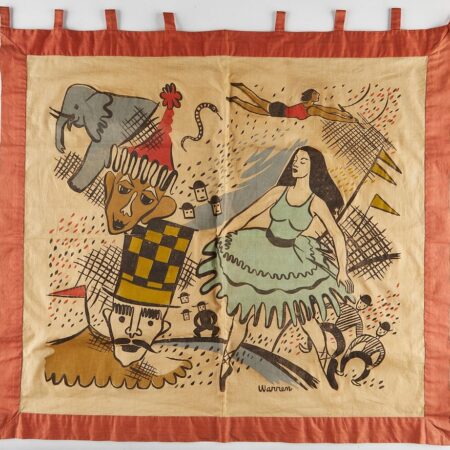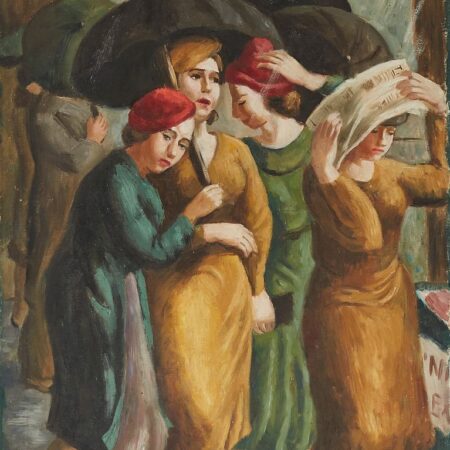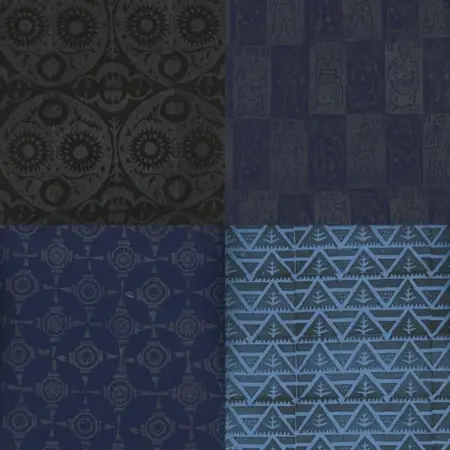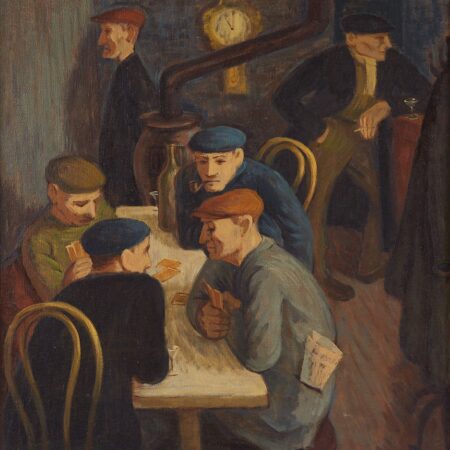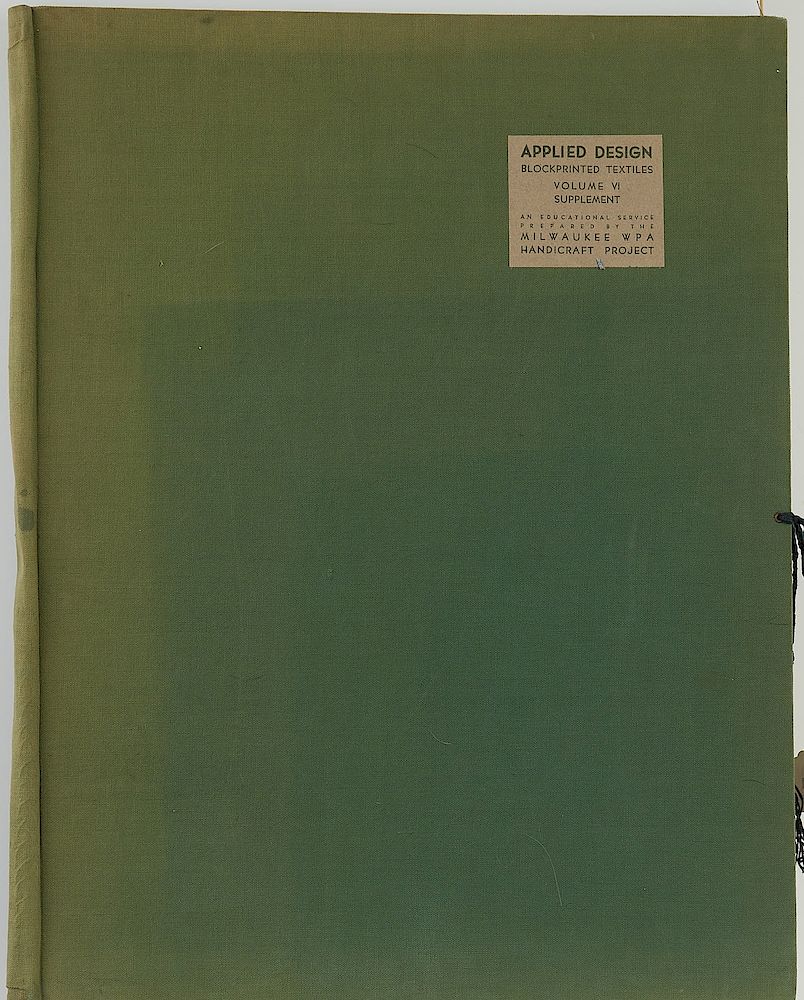
WPA Milwaukee Handicraft Project. Portfolio of block printed fabric pieces titled “Applied Design: Blockprinted Textiles Portfolio, vol. 4: Border Designs.” Circa 1937-1938.
Provenance: Private collection, Minnesota.
Lot Essay: The Works Progress Administration (later Works Projects Administration), often shortened to WPA, was a U.S. government program designed to stimulate the economy by employing large numbers of Americans left destitute by the Great Depression. Created in 1935 as part of Franklin D. Roosevelt’s New Deal, the WPA employed approximately 8.5 million people over the course of its eight year existence to work on diverse projects ranging from road construction to experimental theatre.
The Milwaukee Handicrafts Project, or MHP, was a project of the WPA active from November 1935 to 1943. The MHP was the brainchild of Harriet Clinton, the district director of the Women’s Unit of the WPA in Milwaukee County, who was looking for a way to employ unskilled women on relief rolls. She got the idea to teach these women handicrafts, so she reached out to Elsa Ulbricht, an art instructor at Milwaukee Teacher’s College. Ulbricht took her idea and ran with it, creating a program that trained these unskilled women, providing them with useful skills that would allow them to eventually join the workforce as skilled workers.
This bold plan worked even better than expected. The women of the MHP were often tragically underqualified for any job when they arrived, often illiterate, unable to speak English, and incapable many skills, even those considered as basic as sewing. With the help of Ulbricht’s designer-foremen–who were primarily Ulbricht’s former students at Milwaukee Teacher’s College–they quickly learned a variety of handicrafts with such great success that the MHP experienced an extremely high turnover as women left for successful careers in industry jobs. MHP’s success was due in part to the openness of the program and focus on treating workers with respect. One notable example of this is when a group of African-American women joined the program, the government’s intention was for them to be segregated and work in a different space. However, Mary Kellogg, the program’s art director, put her foot down and insisted they be integrated. This group of women ended up being some of the most skilled workers in the MHP, as they had been passed over for skilled work WPA projects due to their race, and they quickly became integral members of the program.
Eventually, the MHP grew to include eleven units: the bookbinding unit, the block printing unit, the screen printing unit, the weaving unit, the rug unit, the applique unit, the doll unit, the cloth toy unit, the costume unit, the wood unit, and the furniture unit. All of these products were available to public institutions for the price of materials, and they were extremely popular due to their quality and variety. In fact, many MHP pieces are still in use in public institutions in Wisconsin and around the country. The wide usage of the products of the MHP speaks for itself as to how powerful this innovative project was in the way it gave these initially unskilled workers skills, dignity, and a way to make a useful contribution during difficult times.
Lots 62-65 are portfolios assembled to demonstrate block-printed designs on textiles, a popular product from the MHP. The block-printed textiles created by the MHP were used for book covers, curtains, and wall hangings for many schools and institutions. These portfolios were used to display exemplary designs of block printing for use in high schools and colleges as well as for training and inspiration purposes within the WPA.
Portfolio: height: 25 in x width: 19 1/4 in.
$1,050
